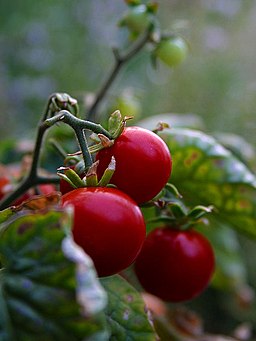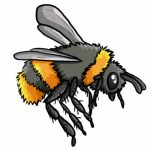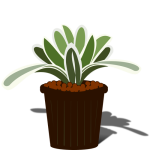THE SCIENTIFIC METHOD
LEARNING OBJECTIVES
List the five steps of the scientific method.
Identify the steps of the scientific method in research scenarios.
MCCCD OFFICIAL COURSE COMPETENCIES
Describe and utilize the process of scientific inquiry, its realm, and limitations.
introduction
Every day for the rest of your life, you are going to be bombarded with scientific information. How do you know which information to believe? You must look at the method used in scientific studies. Good science uses the scientific method. The scientific method is a series of steps followed by scientific investigators to answer questions about the natural world. The scientific method is a logical, organized mechanism for identifying and researching a problem, and devising a strategy for solving it.
TOMATO SIZE AND FERTILIZER
You built a raised garden to grow fruits and vegetables. You absolutely love tomatoes. You wonder if fertilizer increases the size of tomatoes. You guess that fertilizer will increase the size of tomatoes. You plant 48 identical tomato plants in identical pots in the same potting soil. Each plant is exposed to 8 hours of sunlight per day and is given 100 ml of water per day. 24 plants are given fertilizer; 24 plants are not given fertilizer. The tomatoes given fertilizer are twice as large as tomatoes not given fertilizer. Fertilizer increased the size of tomatoes.

The Scientific Method Includes Five Steps:
Question -> Hypothesis -> Experimentation -> Analyze Data and Draw Conclusions(s)
QUESTION
In this step, you must decide what it is that you will be studying. This sounds like a simple procedure, but it is actually very important. It identifies exactly what you wish to learn and it allows you to focus only on that material. Questions that can be answered using the scientific method must be well defined (not “what is the meaning of life?”); measurable and controllable (see control below).
Question in tomato size and fertilizer experimental scenario in box above: Does fertilizer affect the size of the tomatoes?
HYPOTHESIS
The hypothesis is an educated guess, a proposed answer to the question. When exhaustive experiments and observations consistently support an important hypothesis, it is accepted as a theory. There are very few theories in science; people just use the term improperly.
Hypothesis in tomato size and fertilizer: Fertilizer will increase the size of the tomatoes.
EXPERIMENTATION
This is the part of the scientific method that tests your hypothesis.
Experimentation in tomato size and fertilizer: 48 identical tomato plants are planted in identical pots in the same potting soil. Each plant is exposed to 8 hours of sunlight per day and is given 100 ml of water per day. 24 plants are given fertilizer; 24 plants are not given fertilizer.
When designing an experiment, control(s) must be included and variables must be defined. There are two groups in the tomato size and fertilizer experiment, and they are identical except that one receives a treatment (fertilizer) while the other does not. The group that receives the treatment in an experiment (the fertilized tomato plants) is called the experimental group, while the group that does not receive the treatment (the tomato plants that were not fertilized) is called the control group. The control group provides a baseline that allows us see if the treatment has an effect. Controls eliminate alternate explanations of experimental results, especially experimental errors and experimenter bias. In some experiments the control group may be given a placebo. A placebo is an inactive substance that looks the same as, and is given the same way as, the drug or treatment being tested.
Experimental Group in tomato size and fertilizer: Tomato plants given fertilizer.
Control Group in tomato size and fertilizer: Tomato plants that were not given fertilizer.
The factor that is different between the control and experimental groups (in tomato size and fertilizer, fertilizer) is known as the independent variable. This variable is independent because it does not depend on what happens in the experiment. Instead, it is something that the experimenter applies or chooses. In contrast, the dependent variable in an experiment is the response that’s measured, counted, or observed to see if the treatment had an effect. In tomato size and fertilizer, tomato size is the dependent variable. The dependent variable (tomato size) depends on the independent variable (fertilizer), and not vice versa.
Scientific investigations are not valid if their conclusions are based on one or two test subjects. Experiments need to have a large sample size. The tomato size and fertilizer experiment included 48 plants; this is called replication.
ANALYZE DATA AND DRAW CONCLUSION(S)
Once the experiment is complete, collect your data and analyze it and draw conclusions to see if the hypothesis is correct or incorrect. The great thing about science is as long as you used the scientific method your results are relevant and publishable whether you hypothesis was correct or incorrect. After all it is just a guess.
Analyze data and draw conclusions in tomato size and fertilizer: The tomatoes of fertilized plants were twice as large as tomatoes from unfertilized plants. Fertilizer increased the size of tomatoes.
Let’s practice before you complete the scientific method questions document
WE PRACTICE
 A bee keeper is testing the effect of mites on honey production in bee hives
A bee keeper is testing the effect of mites on honey production in bee hives
What is the independent variable? Mites
What is the dependent variable? Honey production
YOU PRACTICE
A scientist is testing the effect of calcium on egg production
WE PRACTICE
 A student wants to study the effect of sunlight on plant growth. 36 identical plants and planted in identical posts using the same potting soil. Each plant received 100 ml of water per day. 12 plants in group X where exposed to 12 hours of sunlight per day. 12 plants in group Y where exposed to 24 hours of sunlight per day. 12 plants in group Z where exposed to no sunlight. Plant height is measured after six weeks. The plants in group X where three times as tall as the plants in group Y. Exposure to sunlight increases plant growth.
A student wants to study the effect of sunlight on plant growth. 36 identical plants and planted in identical posts using the same potting soil. Each plant received 100 ml of water per day. 12 plants in group X where exposed to 12 hours of sunlight per day. 12 plants in group Y where exposed to 24 hours of sunlight per day. 12 plants in group Z where exposed to no sunlight. Plant height is measured after six weeks. The plants in group X where three times as tall as the plants in group Y. Exposure to sunlight increases plant growth.
What is the independent variable? Sunlight
What is the dependent variable? Plant height
What is the control? Plants that received no sunlight
YOU PRACTICE
A new sunscreen has been developed that is supposed to be more effective at preventing sunburn. 2,000 participants spray one arm with the new sunscreen, and spray nothing on the other arm. After 4 hours in the sun, skin is evaluated for redness.
WE PRACTICE
 A dog food company developed a new dog food that may decrease weight in overweight dogs. They guess the new food will decrease weight in overweight dogs. They design an experiment using 100 overweight dogs. 50 dogs in group A get the new food and 50 dogs in group B continue their normal diets. After one month, the dogs are weighed. The dogs in group A lost 0 pounds. The dogs in group B lost 0 pounds. The new dog food did not decrease weight in overweight dogs.
A dog food company developed a new dog food that may decrease weight in overweight dogs. They guess the new food will decrease weight in overweight dogs. They design an experiment using 100 overweight dogs. 50 dogs in group A get the new food and 50 dogs in group B continue their normal diets. After one month, the dogs are weighed. The dogs in group A lost 0 pounds. The dogs in group B lost 0 pounds. The new dog food did not decrease weight in overweight dogs.
WHAT IS THE QUESTION? Does the new dog food decrease weight in overweight dogs?
WHAT IS THE HYPOTHESIS? The new dog food will decrease weight in overweight dogs
EXPERIMENTATION
Which group is the experimental group? Group A
Which group is the control group? Group B
What is the independent variable? Type of dog food
What is the dependent variable? Weight of dogs
How did they deal with replication? Each group included fifty dogs
YOU PRACTICE
A decrease in the ozone layer increases the amount of ultraviolet radiation reaching Earth. Scientists are conducting an experiment to determine if increased ultraviolet radiation is killing frog tadpoles. The scientists guess that increased ultraviolet radiation from the sun is killing off the tadpoles. They design an experiment with two groups of tadpoles. Group one involves 100 tadpoles in a 5 gallon container of water placed outside, covered by glass that filters out ultraviolet radiation. Group two is set up exactly the same as group one, except that it is covered with acrylic plexiglass that will not filter out ultraviolet radiation. After one month, 96 tadpoles are alive in the group one container and 96 tadpoles are alive in the group two container. Ultraviolet radiation is not killing frog tadpoles.
NOW YOU ARE READY TO COMPLETE THE SCIENTIFIC METHOD QUESTIONS DOCUMENT

